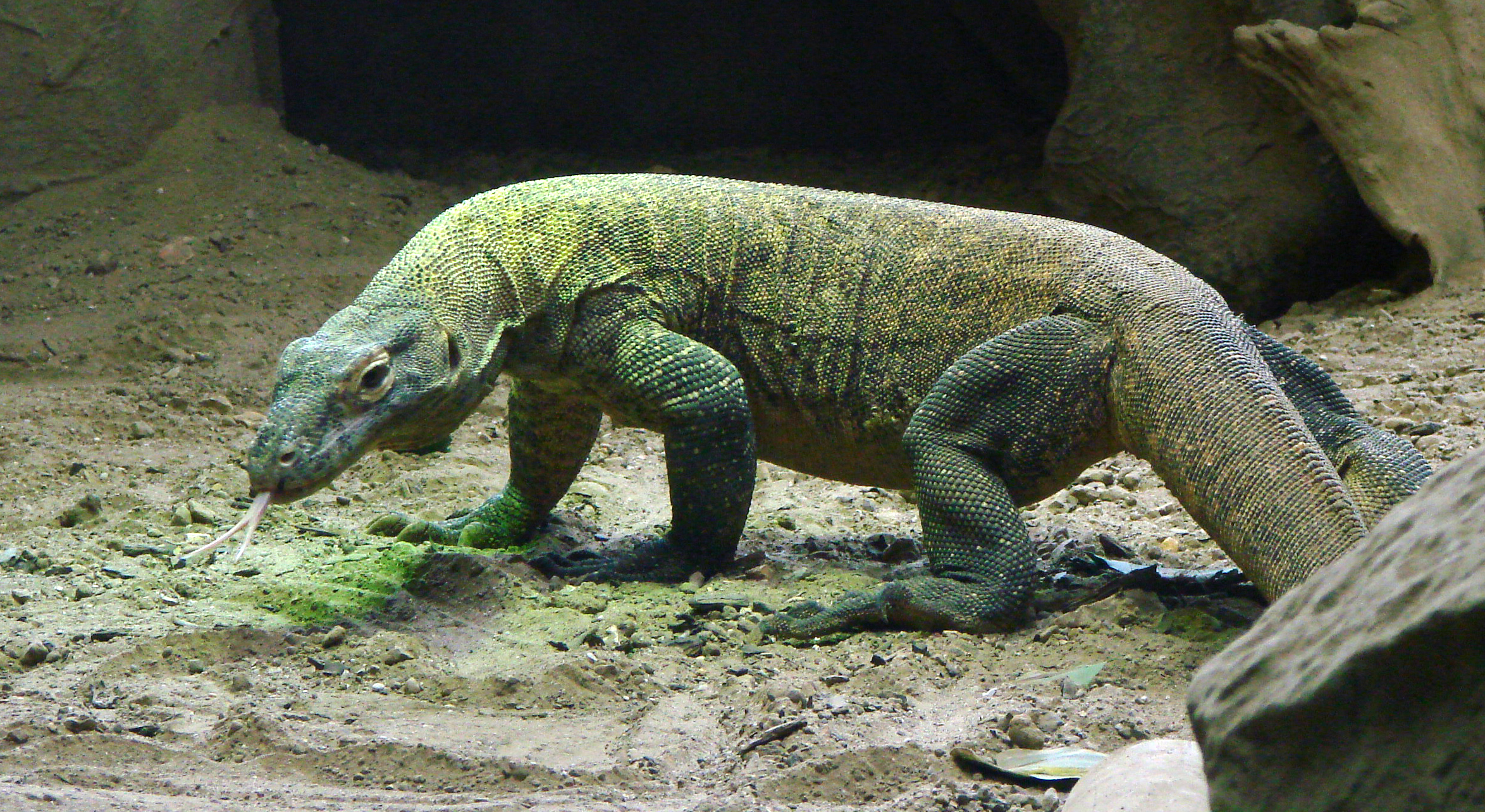Mating begins between May and August, and the eggs are laid in September. About twenty eggs are deposited in abandoned megapode nests and incubated for seven to eight months, hatching in April, when insects are most plentiful. Young Komodo dragons are vulnerable and therefore dwell in trees, safe from predators and cannibalistic adults. They take around three to five years to mature, and may live as long as fifty years. They are among the rare vertebrates capable of parthenogenesis, in which females may lay viable eggs if males are absent, producing only male offspring.
 Komodo dragons were first recorded by Western scientists in 1910.[9] Their large size and fearsome reputation make them popular zoo exhibits. In the wild their range has contracted due to human activities and they are listed as vulnerable by the IUCN. They are protected under Indonesian law, and a national park, Komodo National Park, was founded to aid protection efforts.
Komodo dragons were first recorded by Western scientists in 1910.[9] Their large size and fearsome reputation make them popular zoo exhibits. In the wild their range has contracted due to human activities and they are listed as vulnerable by the IUCN. They are protected under Indonesian law, and a national park, Komodo National Park, was founded to aid protection efforts.Etymology
The Komodo dragon is also known as the Komodo monitor or the Komodo Island monitor in scientific literature, although this is not very common. To the natives of Komodo Island, it is referred to as ora, buaya darat (land crocodile) or biawak raksasa (giant monitor)
Evolutionary history
The evolutionary development of the Komodo dragon started with the Varanus genus, which originated in Asia about 40 million years ago and migrated to Australia. Around 15 million years ago, a collision between Australia and Southeast Asia allowed the varanids to move into what is now the Indonesian archipelago, extending their range as far east as the island of Timor. The Komodo dragon was believed to have differentiated from its Australian ancestors 4 million years ago. However, recent fossil evidence from Queensland suggests that the Komodo dragon evolved in Australia before spreading to Indonesia. Dramatic lowering of sea level during the last glacial period uncovered extensive stretches of continental shelf that the Komodo dragon colonized, becoming isolated in their present island range as sea levels rose afterwards.







No comments:
Post a Comment